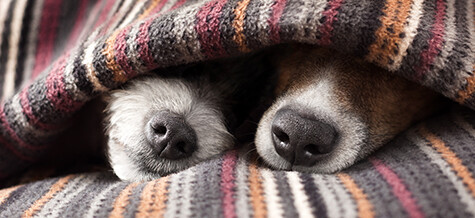
I was going to write about salt this week but it’ll just have to wait until next month. Be patient my dear readers! 🙂
I’ve been sitting with this notion of “sanctuary” for many months now. For many of us it means a place of refuge or safety. Other thoughts come to mind too – haven, oasis, shelter and retreat. Is “sanctuary” a physical place (snuggled under a favorite blanket) or can it be an activity or even people? I’m writing about this because I believe it’s essential to one’s overall health to feel safe, honored and respected, wherever that may be. I’ve had the honor of offering my Reiki sessions to clients at a special place here in Denver. This is the space that my dear friend JoAnne and her husband have created for themselves (they call it, The Sanctuary) and their respective clients in their healing practices. And boy, does it “feel” like a haven for safety and healing. Today I’d like to explore “sanctuary” with you, my readers.

Well being and contentment are major Hygge themes.
In December I read an interesting article about “hygge,” pronounced, “hoo-gah,” a Danish term defined as “a quality of coziness and comfortable conviviality that engenders a feeling of contentment or well-being.” It can be used as an adjective, noun or verb. Hygge has long been considered a part of the Danish culture. And Danish people are thought to have some of the highest levels of happiness. Hmm… throw me a bone on “well-being” and I’m after it! Six books have been published on this topic in this past year alone and the international community is embracing the notion. Being curious I purchased “The Book of Hygge” to review myself.
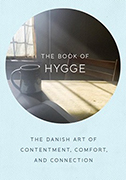 Louisa Thomsen Brits, the author of “The Book of Hygge: The Danish Art of Contentment, Comfort, and Connection,” calls it “a practical way of creating sanctuary in the middle of very real life” and “a cure for SAD (Seasonal Affective Disorder) in book form.” Click the book to order from Amazon.
Louisa Thomsen Brits, the author of “The Book of Hygge: The Danish Art of Contentment, Comfort, and Connection,” calls it “a practical way of creating sanctuary in the middle of very real life” and “a cure for SAD (Seasonal Affective Disorder) in book form.” Click the book to order from Amazon.
She writes, “Winter is the most hygge time of year. It is candles, nubby woolens, shearling slippers, woven textiles, pastries, blond wood, sheepskin rugs, lattes with milk-foam hearts, and a warm fireplace. Hygge can be found in a bakery and in the dry heat of a sauna in winter. It’s wholesome and nourishing, like porridge; Danish doctors recommend “tea and hygge” as a cure for the common cold. It’s possible to hygge alone, wrapped in a flannel blanket with a cup of tea, but the true expression of hygge is joining with loved ones in a relaxed and intimate atmosphere.”
The book further explains the notion that hygge offers a framework to support basic human needs, desires and habits. One’s efforts include making practical steps to “shelter, cluster, enclose, embrace, comfort and warm ourselves and each other.”
Let’s face it, it’s still winter, cold and dark in many place and we’re living in a very unsettled, unpredictable time. Many are stressed with the daily bombardment of disturbing information coming from the news and social media. W know we can’t control outside events or others but we can control ourselves. So, where DO we find sanctuary? While the Danes have coined this word and notion, as I finished reading I was heartened in thinking that these ideas and practices find commonality throughout the world in many ways. I am blessed to live in a community of friends and family that practice hygge every day in similar ways. In our efforts to step away from the distractions and busy-ness in our lives we tend to honor and value many of the same practices that seek and honor sanctuary.
When I think of hygge I also think of mindfulness since they both encompass a willingness to engage in these practices. Both urge us to be in the present enough to acknowledge an act, moment or feeling when the ordinary can feel extraordinary.
The primary themes of hygge include:
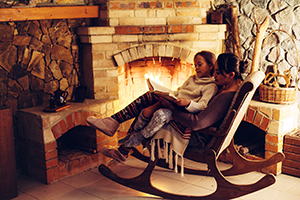
Settling in front of warm fires with loved ones, favorite clothes and blankets is a part of hyyge.
Comfort
The secret to hygge lies in the details of paying attention our daily rhythms. Who do we choose to spend time with, what articles of clothing do we wear because they feel so good against our skin, what items do we use every day that bring comfort, value and meaning? Is it in the special oils we burn in our diffusers, the music we play, and the artwork that surrounds us with special memories? Is it our favorite pair of broken in shoes, or a cracked bowl or kitchen utensil we return to everyday? Bonds of our relationships, our habits and daily rituals in even the smallest actions are at the heart of hygge. In all of these things we fall back to comfort with the familiar.
Others – putting a blanket around someone’s shoulders, making a meal, putting flowers on their bedside table. Ourselves– Time alone in a bath, disconnecting from technology for a while, meditating, listening to our favorite music or doing nothing at all.
Connection
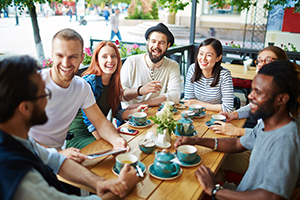
Being part of a safe and welcoming group creates a sense of belonging for all.
Don’t we all need to feel that we “belong” somewhere? In the practice of hygge, everyone is welcomed for his or her contributions. This sense of belonging provides both physical and psychological warmth for the soul. It’s a process that invites inclusion, engagement, bonding and trust. There is openness to being “held” by those in your circle. It requires a willingness to set aside time for simply being with people or oneself. Of special note, the circle doesn’t take themselves too seriously, especially with those displaying an inflated sense of worth. “Heavy” topics are avoided to keep harmony and the notion of safety intact. (Perhaps it might be healthier if we all took a break from political topics now and then!) It’s also important to remember that this practice includes time for children, those in all age groups, and pets.
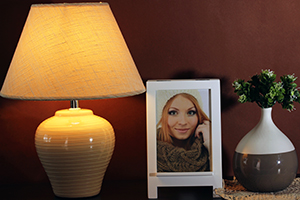
Rituals like taking a favorite photo with us when we travel is creating sanctuary and home away from home.
Home
This can also be “home away from home.” That place we create that offers us solaces to restore. It could be a tent in the mountains, a hotel room in another city…don’t we all have special routines when we travel? Do we take a favorite photograph, unpack a certain way, bring our favorite music or pillow with us? How many of us take our rituals with us wherever we go to help us familiarity, comfort and nourishment?
Place
Is it curled up in your favorite chair or stopping by a friend’s for a glass of wine a few days a week? Perhaps you have a special “Cheers” where everybody knows your name? 🙂 Hygge invites us to enter a moment and be present in that moment wherever that may be. Ms. Brit notes, that when we all “hygger” we nest into the setting offered to us.” And protective boundaries allow us to be in our present moments without being disturbed.
“It is in the shelter of each other that the people live.” – Irish proverb
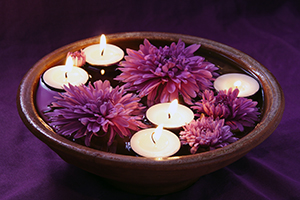
Candles and flowers add so much to mood and hospitality in hygge.
Sensory
- Lighting candles to create mood
- Filling your space with good smells-baking, candles, oils
- Creating seasonal meals with love
- Elevating a meal and mood by using your special dinnerware
- Including candles for sacredness and celebration
- Playing music that you love
- Displaying fresh flowers around when you can
- Wearing comfortable clothes
- Surrounding yourself with comfortable furniture and fabrics
- Touching with hugs and extending one’s hand
Shelter
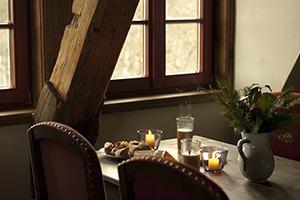
Offering a place at the table creates so much sanctuary for guests.
How many ways can you think of that offer sanctuary and shelter?
Here are a few:
- When we invite others into our homes
- When we provide time to listen
- When we provide a bed for the night
- When we draw our chairs closer together
- Offering a place at the table and provide nourishing food
In closing I need to note that the author adds emphatically that “perfectionism inhibits hygge, makes us hold our breath, and tightens the atmosphere around us.” The moments need to unfold organically. Our mindfulness comes from a place of putting something in place with love and then allowing a flow to occur. “Hygge is a celebration of the spontaneous and honest, a step toward a life that is real and uncontrived.”
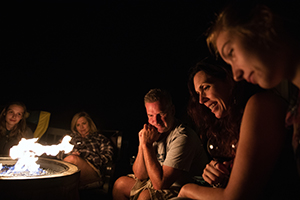
Wishing you all good hygge this winter!
Our well-being is a deep connection to ourselves on so many levels along with our connection to the world. And each and every one of us needs sanctuary. Hygge and mindfulness offer us a place in time to focus and be held in gratitude for we know the moment will pass. Whether in hygge or in a mindfulness practice, isn’t it about living in the present, genuine connection with others and ourselves with daily rituals for gratitude. And doesn’t this practice allow us to consider what it is we “value” in our lives? For it is in assessment of that which we value, that our practices become easier and authentic. I hope this post serves to remind us all to continue to practice and seek other ways in which to offer love and sanctuary to others and ourselves.
“We cannot all do great things. But we can do small things with great love.” – Mother Teresa
Peace and Good Health!
![]()
Sources:
Anna Altman: The New Yorker, December 18, 2016 – The Year of Hygge, the Danish Obsession with Getting Cozy
Louisa Thomsen Brits – The Book of Hygge: The Danish Art of Contentment, Comfort, and Connection
If you “Like” this post, I’d be thrilled if you’d share it.
FEB
